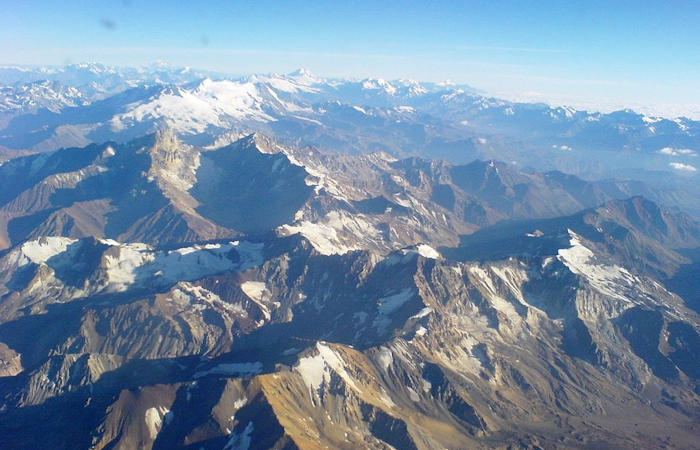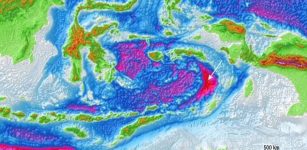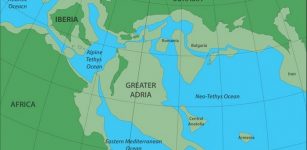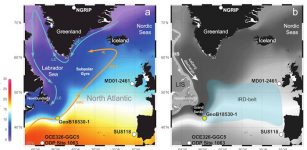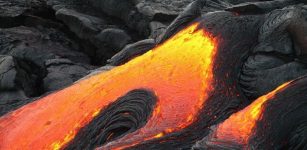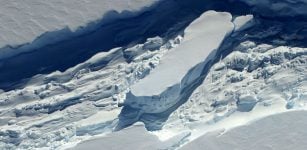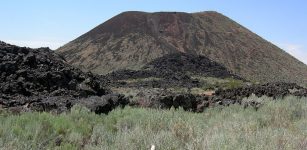How Did The Andes Mountains Get So Huge? New Geological Study May Hold The Answer
Eddie Gonzales Jr. – MessageToEagle.com – How did the Andes—the world’s longest mountain range—reach its enormous size? This is just one of the geological questions that a new method developed by researchers at the University of Copenhagen may be able to answer. With unprecedented precision, the method allows researchers to estimate how Earth’s tectonic plates changed speed over the past millions of years.
The Andes mountain range as seen from a plane, between Santiago de Chile and Mendoza, Argentina, in summer. Credit: Jorge Morales Piderit – Public Domain
The Andes is Earth’s longest above-water mountain range. It spans 8900 kilometers along South America’s western periphery, is up to 700 kilometers wide, and in some places, climb nearly seven kilometers into the sky. But exactly how this colossal mountain range emerged from Earth’s interior remains unclear among geologists.
University of Copenhagen researchers come with a new hypothesis. Using a novel method developed by one of the researchers, they closely studied the tectonic plate upon which the range is saddled. Their finding has shed new light on how the Andes came into being.
Tectonic plates cover Earth’s surface like massive puzzle pieces. They shift a few centimeters each year, at about the same pace as our nails grow. From time to time, these plates can suddenly speed up or slow down. However, we know little about the fierce forces behind these events. The UCPH researchers arrived at estimates that are more precise than ever, both with regards to how much and how often the plates changed velocity historically.
The researchers’ new calculations demonstrate that the South American plate suddenly and spectacularly shifted gears and slowed on two significant occasions over the past 15 million years. And this may have contributed to the widening of the enormous chain. The study’s results have been published in the journal Earth and Planetary Science Letters.
Remarkably, the two sudden slowdowns occurred between periods when the Andean range was under compression and growing rapidly taller:
“In the periods up until the two slowdowns, the plate immediately to the west, the Nazca Plate, plowed into the mountains and compressed them, causing them to grow taller. This result could indicate that part of the preexistent range acted as a brake on both the Nazca and the South-American plate. As the plates slowed down their speed, the mountains instead grew wider,” explains first author and Ph.D. student Valentina Espinoza of the Department of Geosciences and Natural Resource Management.
Mountains made the plate heavier
According to the new study, the South American plate slowed down by 13% during a period that occurred 10-14 million years ago, and 20% during another period 5-9 million years ago. In geologic time, these are very rapid and abrupt changes. According to the researchers, there are mainly two possible reasons for South America’s sudden slowdowns.
One could, as mentioned, be related to the extension of the Andes, where the pressure relaxed and the mountains grew wider. The researchers’ hypothesis is that the interaction between the expansion of the mountains and the lower speed of the plate was due to a phenomenon called delamination. That is, a great deal of unstable material beneath the Andes tore free and sank into the mantle, causing major readjustments in the plate’s configuration.
Pacific absolute plate-motion change as obtained from a hotspot reference frame (red; from Wessel and Kroenke (2008)) versus as obtained from RPM analysis (blue; fixed Eurasia plate). Map shows the 30% confidence interval ellipse for the PA Euler pole change for each ensemble. Inset shows the magnitude-change distribution for the aforementioned Euler-vector ensembles. Map uses Mollweide projection centered at 60∘E. Credit: Earth and Planetary Science Letters (2023). DOI: 10.1016/j.epsl.2023.118009
This process caused the Andes to change shape and grow laterally. It was during these periods that the mountain chain expanded into Chile to the west and Argentina to the east. As the plate accumulated more mountain material and became heavier, the plate’s movement slowed.
“If this explanation is the right one, it tells us a lot about how this huge mountain range came to be. But there is still plenty that we don’t know. Why did it get so big? At what speed did it form? How does the mountain range sustain itself? And will it eventually collapse?” says Valentina Espinoza.
According to the researchers, another possible explanation for why the plate slowed is that there was a change in the pattern flow of heat from the Earth’s interior, known as convection, that moved up into the uppermost viscous layer of the mantle which tectonic plates float on top of. That change manifested itself as a change in the plate’s movement.
The researchers now have the information and tools to begin testing their hypotheses through modeling and experimentation.
May become a new standard model
The method to calculate the changes of tectonic plate motion builds upon the previous work of associate professor and study co-author Giampiero Iaffaldano and Charles DeMets in 2016. The special thing about the method is that it utilizes high-resolution geological data, typically used only to calculate the motion of plates relative to each other. Here, the same data has been used to calculate changes in the motion of plates relative to the planet itself. It provides estimates with unprecedented accuracy.
After testing the method with a combination of six other tectonic plates, the researchers believe that it could become a new standard method:
“This method can be used for all plates, as long as high-resolution data are available. My hope is that such method will be used to refine historic models of tectonic plates and thereby improve the chance of reconstructing geological phenomena that remain unclear to us,” says Giampiero Iaffaldano, who concludes:
“If we can better understand the changes that have occurred in the motions of plates over time, we can have a chance at answering some of the greatest mysteries of our planet and its evolution. We still know so little about, for example: the temperature of Earth’s interior, or about when plates began moving. Our method can most likely be used to find pieces for this great big puzzle.”
The study was published in Earth and Planetary Science Letters
Written by Eddie Gonzales Jr. – MessageToEagle.com Staff

